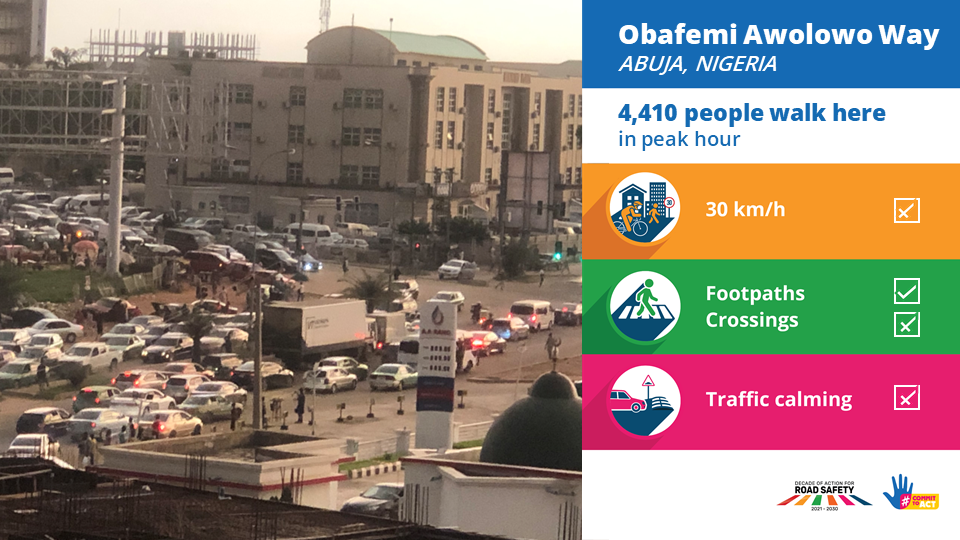
Our 2024 #CommitToAct campaign highlights unsafe journeys and demands safer conditions. Using Mobility Snapshots, road safety activists assess intersections from a pedestrian perspective, demonstrating the need for life-saving interventions. So far, the snapshots from our members have revealed critical concerns and deficiencies in road infrastructure that should protect pedestrians. They have highlighted that frequently used intersections in their communities are dangerous and have become hazard zones for pedestrians and cyclists.
Unsafe and unsustainable streets have been accepted as normal and inevitable. People on their daily journeys rarely question why there is no safe way to cross for them from the bus station to the market, or why fast vehicles are tolerated where their children walk to school. They do not see safety as their right.
Around the world, road systems prioritize the convenience of motorized vehicles above the needs of pedestrians and cyclists, even where they are the majority. Emphasis is put on both motorized and non-motorized road users themselves to fix it: don’t walk on the road, don’t drive so fast. This overlooks the more effective fixes: make sure that pedestrians don’t need to walk on the road and have safe places to cross, make sure that road environments encourage drivers to maintain a safe speed.
We know the evidence-based, cost-effective solutions to achieve this. Listed in the Alliance Priority Interventions are four solutions that are proven to save lives in areas where pedestrians and cyclists mix with cars and other motorized vehicles: 30 km/h zones, lower speeds, pedestrian facilities, and traffic calming. As well as saving lives and reducing the devastating personal consequences for victims and families, these solutions can improve air quality, reduce emissions, even reduce congestion. Streets that are safe for pedestrians and cyclists are more equitable: people on low incomes are more likely to rely on walking and cycling. They are also the hardest hit economically if they are injured in a crash. Moreover, according to iRAP’s Safety Explorer, bringing 75% of roads worldwide up to 3-star or better standard, has an estimated cost benefit ratio of 7.6, equating to US$10.5 trillion global economic benefit and more than 100 million lives and serious injuries saved over 20 years. So why do we continue to accept unsafe, unsustainable, unfair, and uneconomical streets?
This is why our #CommitToAct campaign this month has been shining a light on people’s unsafe journeys to demand that the unsafe is made safe. Road safety activists around the world have assessed local intersections from the perspective of a pedestrian, demonstrating how many pedestrians are using them and identifying whether the life-saving interventions above are present.
It’s time to challenge what is considered normal and inevitable. It’s time to show the reality on our streets and, with that evidence in hand, advocate for the simple, cost-effective solutions that can make everyone’s journeys safe, sustainable, and equitable.